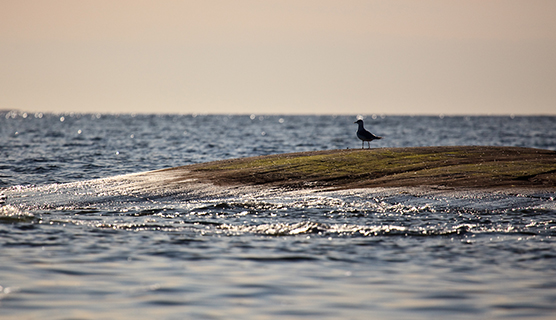Cyanobacterial blooms increase in sea, lakes
Published : 17 Jun 2022, 02:44
Some cyanobacterial observations have been made in Finnish inland waters and sea areas, but the situation is typically calm for the early summer, said the Finnish Environment Institute (SYKE) in a press release on Thursday.
At sea, cyanobacteria have been observed in sub-surface waters, but very few surface blooms have been sighted.
Lake waters are currently slightly warmer than on average, but this has not yet had a significant impact on the number of cyanobacterial observations.
The national cyanobacterial monitoring is carried out as part of the monitoring of the state of the environment in cooperation with the Centres for Economic Development, Transport and the Environment (ELY Centres), municipal environmental and health authorities and the Finnish Environment Institute (SYKE). Finnish Rotary Clubs are also actively involved in nationwide cyanobacterial monitoring.
Information on the cyanobacterial situation in the open sea areas is mainly obtained from satellite images, but also from the Finnish Border Guard, the marine research vessel Aranda, the optical device located at the Utö Atmospheric and Marine Research Station, as well as cruise and merchant ships.
The cyanobacterial monitoring is based on the monitoring of cyanobacterial deposits in surface water, and the intention is to provide an overview of the cyanobacterial situation in different water bodies. The monitoring includes about 400 permanent observation sites across the country on inland and coastal waters and in the archipelago.
SYKE reports on the national cyanobacterial situation on a weekly basis every Thursday from the beginning of June until the end of August. The weekly algal reporting on the national cyanobacterial monitoring was launched in 1998.
According to the Finnish Institute for Health and Welfare (THL), cyanobacterial occurrences can cause health hazards. Cyanobacteria produce a number of different compounds that can cause symptoms.
Some cyanobacteria can produce liver or nerve toxins, but most of the symptoms experienced by swimmers may also be due to other compounds.
Small children and pets should particularly be kept out of water rich with cyanobacteria. Water with cyanobacteria should not be used in a sauna or as washing or irrigation water. If you suspect a poisoning, seek medical advice or take the pet to a veterinarian. If necessary, the Poison Information Centre will provide additional instructions.


